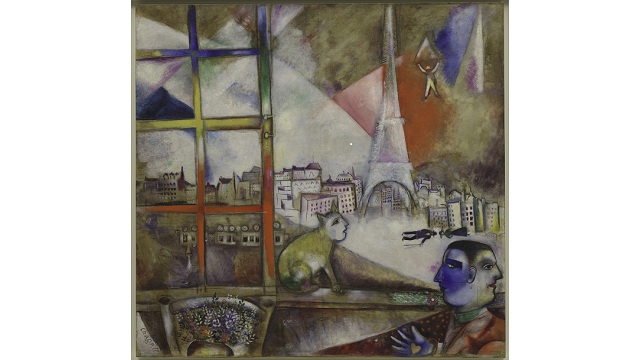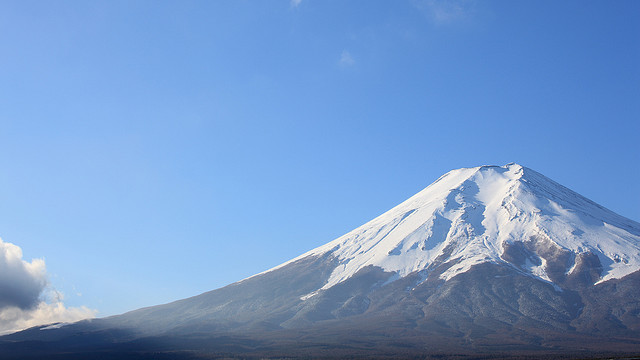Small World: Connecting Old and New in Japanese Art

[Please see bottom of this post for a request and contest related to this book.]
“Japan can be seen as the end of the world,” write Ivan Vartanian and Kyoko Wada in See/Saw: Connections Between Japanese Art Then and Now, “as a storehouse of all mythology that forms the origins of human thought. In its absorption of ideas from other cultures, it also becomes a repository. Japan, as the world’s future, is simultaneously the world’s past. It is a model of a small world getting even smaller.” Because it acts as a microcosm of world culture, Japan globalizes art within its own borders and even self-reflexively gazes at its own aesthetic navel as artists today continually rely on the artists of the past. As Japan itself teeters on the edge of disaster in the aftermath of the recent earthquake and tsunami, See/Saw offers the perfect entry for discovery of this continual oscillation in time and space that characterizes the often elusive Japanese spirit.
Vartanian and Wada, both art critics based in Japan, felt compelled to write this book after noticing in contemporary Japanese art “a (sometimes covert) trend that cuts across all genres and disciplines: the new is old, or the old is new.” They see this impulse to parallel old and new as “a phenomenon of this particular time—our largely digital age”—in which the “internet has brought about a synchronization of cultures internationally.” In the midst of this global homogenization, however, Japan stands out from the West in its striking ease with tradition. Whereas the West strains beneath the “anxiety of influence,” the East demonstrates “a comfort with—if not eagerness for—influence.” “[W]hat is the Japanese identity in a contemporary context that is post-globalism, post-pop, post-digital takeover?” the authors ask in light of these similarities and differences, anticipating how that same question will soon be asked of the rest of the world.
The strength of See/Saw is in its ability to use art (and the juxtaposition of old and new art) to give concrete form to intangible (and often untranslatable) concepts. Ancient tea rooms, rock gardens, landscapes, and even modern architecture help illustrate the concept of ma, the idea of time and space in balance using gaps and negative space. A rock formation considered sacred throughout Japanese history tells of how the Japanese link spirituality with nature as much as a modern work such as Rei Naito’s Being Given (Naoshima, Home Project Kinza) (from 2001; shown above), a shack in which only a single visitor can enter at a time for no longer than 15 minutes. “Naito’s Being Given summons the divinity that was originally contained by the earth, light, and stone,” they explain, “harking back to a time in the island nation’s past before it was a nation, before Shintoism, before religion took form, to the prehistory of spirituality.” Such poetic descriptions convey the beauty of these ideas in artistic action masterfully.
All the familiar figures of Japanese art appear here. Everyone from Hiroshige Utagawa to Katsuhiro Otama, creator of the manga masterpiece, Akira, makes a cameo. Hokusai, perhaps the most familiar and influential Japanese artist to the West, adds to the discussion with his The Great Wave off Kanagawa from Thirty-Six Views of Mount Fuji (which inevitably conjures memories of the recent disaster), but raises eyebrows (at least mine) with a sexy side seen in The Octopus and the Shell Diver, part of the life-affirming sense of play in Japanese art often unknown in the West. Takashi Murakami stands out among the modern masters discussed. Murakami’s “Superflat” movement strives to reject Western three-dimensionalism and return Japanese art to its roots. “Superflat collapses such dualities of high vs. low, uniqueness vs. multiplicity, and art vs. craft,” the authors argue. Such hyper-anti-hierarchy democratizes art and, in the words of Murakami’s “Superflat” manifesto, may make Japan “the world’s future,” albeit an ideal future, seconding the authors’ purpose for writing the book in the first place.
The Japanese idea of Wabi-sabi holds that this world is impermanent, incomplete, and transient. This idea allows believers to accept change and death as simply another part of life. Recent events may challenge this credo, but more likely that worldview will help them cope with a situation Westerners would consider mindblowing. See/Saw: Connections Between Japanese Art Then and Now teaches non-Japanese people the very best of Japanese culture embodied in their art, which flows seamlessly from life itself. Tragically, what happened to Japan recently may presage the future for the rest of the world as we, too, face the onslaught of nature’s fury and deal with our own technology gone awry. However, as See/Saw argues, maybe Japan can be our future in a positive way as well, in the sense of being a template for enduring, surviving, and (hopefully) thriving in an uncertain future as our world grows more similar, simpler, and smaller.
[Image:Rei Naito, Being Given (Naoshima, Home Project Kinza), 2001. Earth, wood, stone, glass, bamboo, tile, mirror, thread, beads, stainless steel, aluminum, plastic, shell. Lot 197.71 sq. m., building 53.49 sq. m. Bennese Art Site, Naoshima. Image source here.]
[Many thanks to Chronicle Books for providing me with a review copy of See/Saw: Connections Between Japanese Art Then and Now by Ivan Vartanian and Kyoko Wada.
[A REQUEST AND A CONTEST:If you liked this review (or even if you didn’t), please consider making a donation to help the people of Japan. Some of the organizations doing good in that terrible situation are Doctors Without Borders and The Red Cross. Please consider helping in some way. And if you do send a donation, e-mail me at ArtBlogByBob “at” hotmail.com to enter a contest to win a copy of See/Saw: Connections Between Japanese Art Then and Now by Ivan Vartanian and Kyoko Wada. Honor rules apply, so you do not need to send “proof” of a donation. Also, the contest is open only to U.S. residents (but anyone can donate, of course). Contest ends at midnight EDT on April 1, 2011.]





